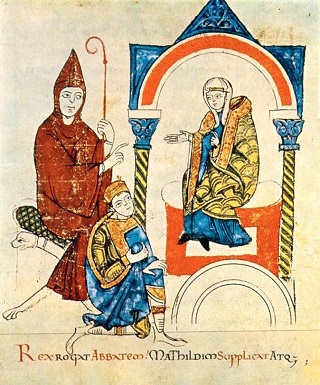A Very Civilised Rebellion: Mantua and Canossa 1090-1115
Dr Rob Houghton
The siege and surrender of Mantua (1090-1091) is almost invariably presented as a pivotal event within the Investiture Contest. The city’s wealth and strategic value made it the focal point of the conflict between the Emperor Henry IV and Matilda, countess of Canossa, and its fall represented a major victory for the Imperial party against Matilda and her Papal allies. Imperial sources celebrated Henry’s success, while Papal and Matildine authors decried the infidelity of the city and its population. At the start of the 1090s Mantua was portrayed as a vitally important node within the broader conflict.
But Mantua disappears from the narrative sources for the rest of the conflict only reappearing in 1114 – long after the death of Henry IV. The role of the city for the remainder of the contest is ignored, despite the ongoing warfare and political machinations across the north of Italy and despite its apparent importance within the region a few years earlier.
This paper addresses this apparent discrepancy. By considering the charter sources of the period it considers if and when Mantua returned to Matilda’s control, and what this ‘control’ encompassed. On this basis it reconsiders the factors which motivated Matilda’s supporters to omit events in Mantua from their accounts of this period. Finally it will address the implications of this analysis for our understanding of the political situation in the North of Italy in this period and for the techniques of rhetoric deployed by the authors of this period.
Rob Houghton is Senior Lecturer in Early Medieval European History at the University of Winchester. You can read about his research interest and publications here. This talk took place on Thursday 20 January 2022 and was recorded. You can watch the recording below:
Image: Matilda of Canossa and Hugh of Cluny (Vatican Library, Codex Vat. Lat. 4922, fol. 49v).
